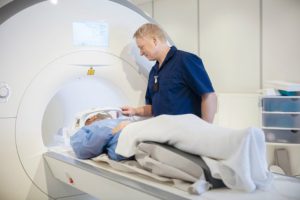Exploring the Differences between a CT Scan and MRI
Both a CT scan and an MRI are extremely effective tools in medical diagnostics and treatment. The two procedures utilise different technological methods to produce images of the body, and provide various applications for health practitioners.

Exploring the Differences between a CT Scan and MRI

Both a CT scan and an MRI are extremely effective tools in medical diagnostics and treatment. The two procedures utilise different technological methods to produce images of the body, and provide various applications for health practitioners.
A computerized tomography (CT) scan, is a rotating x-ray procedure which generates cross-sectional images of the body. Multiple cross-sectional images can be combined to create a 3-dimensional image of the patient. CT scans can be localised onto one region of the body to provide an accurate picture of that organ or area. For example, CT scans may focus on the thoracic region, the brain, the pelvic region, or on the extremities. The 3D imaging is extremely useful in detecting abnormalities such as tumours, blood clots, or abscesses. CT scans may also be used during surgical procedures, such as a tissue biopsy, as they can aid the doctor with delicate internal navigation.
For the patient, the CT scan is a painless procedure, generally lasting for less than half an hour. In certain instances, the scan may require a contrast dye, a pharmaceutical liquid that helps distinguish certain parts of the body during the CT. This dye can be ingested orally by the patient, or may be administered intravenously, depending on the specific needs of the scan.
Magnetic resonance imaging, more commonly known as MRI, utilises radio waves and magnets to create detailed images of the body. Unlike an X-ray or CT scan, it does not use ionising radiation. In an MRI, wire coils in the machine send and receive radio waves, produced by an electric current which is run through the coils. The signals create a series of cross-sectional images (similar to a CT scan). An MRI scan can often create more intricate images; it is especially useful for differentiating between normal and abnormal tissue in the patient.
An MRI usually lasts slightly longer than a CT scan. This procedure, too, is painless, but the machine is somewhat noisier during the scan. An MRI may require the use of a contrast dye as well.
While both the CT scan and the MRI are superb diagnostic tools, your doctor will determine which scan is better suited for your needs. Depending on the purpose of the exam and the region of the body being evaluated, one type of scan may be preferred over the other. For example, a CT scan may be chosen when studying injury to organs, broken bones, or when searching for tumours or blood clots. An MRI may be more appropriate if the doctor needs to see your spinal cord, ligaments, or tendons, as the MRI scan can better show the density of these structures.
Please do not hesitate to contact us if you have any questions about either of these procedures. We at Vision XRAY Group strive to keep our patients comfortable, healthy, and well-informed.
Read our articles and FAQs
We’re delighted to provide updates on the latest medical imaging technology and answer your most frequently asked questions about our services.









